Delta Airlines 2003 Annual Report Download - page 41
Download and view the complete annual report
Please find page 41 of the 2003 Delta Airlines annual report below. You can navigate through the pages in the report by either clicking on the pages listed below, or by using the keyword search tool below to find specific information within the annual report.-
 1
1 -
 2
2 -
 3
3 -
 4
4 -
 5
5 -
 6
6 -
 7
7 -
 8
8 -
 9
9 -
 10
10 -
 11
11 -
 12
12 -
 13
13 -
 14
14 -
 15
15 -
 16
16 -
 17
17 -
 18
18 -
 19
19 -
 20
20 -
 21
21 -
 22
22 -
 23
23 -
 24
24 -
 25
25 -
 26
26 -
 27
27 -
 28
28 -
 29
29 -
 30
30 -
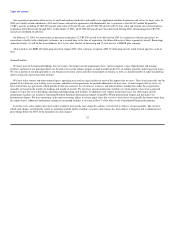 31
31 -
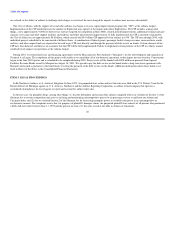 32
32 -
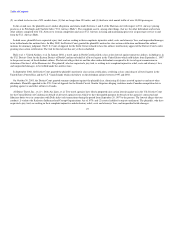 33
33 -
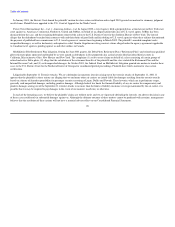 34
34 -
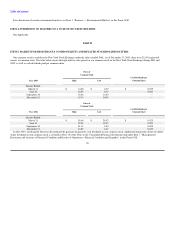 35
35 -
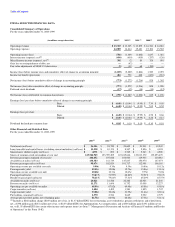 36
36 -
 37
37 -
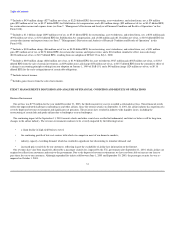 38
38 -
 39
39 -
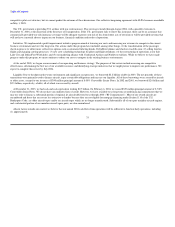 40
40 -
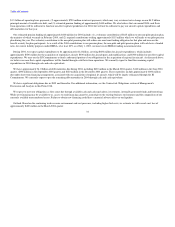 41
41 -
 42
42 -
 43
43 -
 44
44 -
 45
45 -
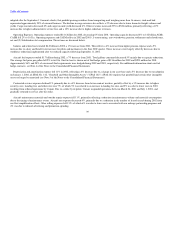 46
46 -
 47
47 -
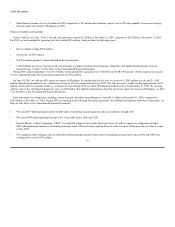 48
48 -
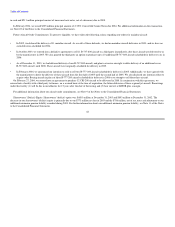 49
49 -
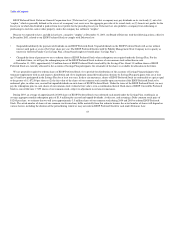 50
50 -
 51
51 -
 52
52 -
 53
53 -
 54
54 -
 55
55 -
 56
56 -
 57
57 -
 58
58 -
 59
59 -
 60
60 -
 61
61 -
 62
62 -
 63
63 -
 64
64 -
 65
65 -
 66
66 -
 67
67 -
 68
68 -
 69
69 -
 70
70 -
 71
71 -
 72
72 -
 73
73 -
 74
74 -
 75
75 -
 76
76 -
 77
77 -
 78
78 -
 79
79 -
 80
80 -
 81
81 -
 82
82 -
 83
83 -
 84
84 -
 85
85 -
 86
86 -
 87
87 -
 88
88 -
 89
89 -
 90
90 -
 91
91 -
 92
92 -
 93
93 -
 94
94 -
 95
95 -
 96
96 -
 97
97 -
 98
98 -
 99
99 -
 100
100 -
 101
101 -
 102
102 -
 103
103 -
 104
104 -
 105
105 -
 106
106 -
 107
107 -
 108
108 -
 109
109 -
 110
110 -
 111
111 -
 112
112 -
 113
113 -
 114
114 -
 115
115 -
 116
116 -
 117
117 -
 118
118 -
 119
119 -
 120
120 -
 121
121 -
 122
122 -
 123
123 -
 124
124 -
 125
125 -
 126
126 -
 127
127 -
 128
128 -
 129
129 -
 130
130 -
 131
131 -
 132
132 -
 133
133 -
 134
134 -
 135
135 -
 136
136 -
 137
137 -
 138
138 -
 139
139 -
 140
140 -
 141
141 -
 142
142 -
 143
143 -
 144
144 -
 145
145 -
 146
146 -
 147
147 -
 148
148 -
 149
149 -
 150
150 -
 151
151 -
 152
152 -
 153
153 -
 154
154 -
 155
155 -
 156
156 -
 157
157 -
 158
158 -
 159
159 -
 160
160 -
 161
161 -
 162
162 -
 163
163 -
 164
164 -
 165
165 -
 166
166 -
 167
167 -
 168
168 -
 169
169 -
 170
170 -
 171
171 -
 172
172 -
 173
173 -
 174
174 -
 175
175 -
 176
176 -
 177
177 -
 178
178 -
 179
179 -
 180
180 -
 181
181 -
 182
182 -
 183
183 -
 184
184 -
 185
185 -
 186
186 -
 187
187 -
 188
188 -
 189
189 -
 190
190 -
 191
191 -
 192
192 -
 193
193 -
 194
194 -
 195
195 -
 196
196 -
 197
197 -
 198
198 -
 199
199 -
 200
200 -
 201
201 -
 202
202 -
 203
203 -
 204
204 -
 205
205 -
 206
206 -
 207
207 -
 208
208 -
 209
209 -
 210
210 -
 211
211 -
 212
212 -
 213
213 -
 214
214 -
 215
215 -
 216
216 -
 217
217 -
 218
218 -
 219
219 -
 220
220 -
 221
221 -
 222
222 -
 223
223 -
 224
224 -
 225
225 -
 226
226 -
 227
227 -
 228
228 -
 229
229 -
 230
230 -
 231
231 -
 232
232 -
 233
233 -
 234
234 -
 235
235 -
 236
236 -
 237
237 -
 238
238 -
 239
239 -
 240
240 -
 241
241 -
 242
242 -
 243
243 -
 244
244 -
 245
245 -
 246
246 -
 247
247 -
 248
248 -
 249
249 -
 250
250 -
 251
251 -
 252
252 -
 253
253 -
 254
254 -
 255
255 -
 256
256 -
 257
257 -
 258
258 -
 259
259 -
 260
260 -
 261
261 -
 262
262 -
 263
263 -
 264
264 -
 265
265 -
 266
266 -
 267
267 -
 268
268 -
 269
269 -
 270
270 -
 271
271 -
 272
272 -
 273
273 -
 274
274 -
 275
275 -
 276
276 -
 277
277 -
 278
278 -
 279
279 -
 280
280 -
 281
281 -
 282
282 -
 283
283 -
 284
284 -
 285
285 -
 286
286 -
 287
287 -
 288
288 -
 289
289 -
 290
290 -
 291
291 -
 292
292 -
 293
293 -
 294
294 -
 295
295 -
 296
296 -
 297
297 -
 298
298 -
 299
299 -
 300
300 -
 301
301 -
 302
302 -
 303
303 -
 304
304
 |
 |

Table of Contents
$1.3 billion of operating lease payments; (2) approximately $750 million in interest payments, which may vary as interest rates change on our $4.2 billion
principal amount of variable rate debt; and (3) estimated pension funding of approximately $440 million. We also believe that our annual 2004 cash flows
from operations will be sufficient to fund our non-fleet capital expenditures for 2004, but will not be sufficient to pay our aircraft capital expenditures and
debt maturities for that year.
Our estimated pension funding of approximately $440 million for 2004 includes (1) a voluntary contribution of $325 million to our non-pilot pension plan,
the majority of which we made in February 2004, and (2) required contributions totaling approximately $115 million which we will make to our pilot pension
plan during the year. The voluntary contribution to the non-pilot pension plan will reduce our near term funding obligation for that plan and increase the
benefit security for plan participants. As a result of the 2004 contributions to our pension plans, the non-pilot and pilot pension plans will each have a funded
ratio, for current liability purposes under ERISA, of at least 80% as of July 1, 2003, our most recent ERISA funding measurement date.
During 2004, we expect capital expenditures to be approximately $1.2 billion, covering $600 million for aircraft expenditures, which includes
approximately $500 million for the acquisition of regional jet aircraft; $300 million for aircraft parts and modifications; and $300 million for non-fleet capital
expenditures. We may use the RJ Commitments to fund a substantial portion of our obligations for the acquisition of regional jet aircraft. As discussed above,
we believe our non-fleet capital expenditures will be funded through cash flows from operations. We currently expect to fund the remaining capital
expenditures in 2004 through cash and cash equivalents.
We have approximately $1.0 billion of debt maturities due during 2004, including $430 million in the March 2004 quarter, $160 million in the June 2004
quarter, $290 million in the September 2004 quarter and $120 million in the December 2004 quarter. These maturities include approximately $300 million
due under short-term financing arrangements associated with our acquisition of regional jet aircraft, which will be largely refinanced through the RJ
Commitments. We currently expect to pay the remaining debt maturities in 2004 through cash and cash equivalents.
We have significant obligations due in 2005 and thereafter. For additional information, see the Contractual Obligations section of Management's
Discussion and Analysis in this Form 10-K.
We expect to meet our obligations as they come due through available cash and cash equivalents, investments, internally generated funds and borrowings.
While new financing may be available to us, access to such financing cannot be assured given the existing business environment and the composition of our
currently available unencumbered assets. Failure to obtain new financing could have a material adverse effect on our liquidity.
Outlook. Based on the continuing weak revenue environment and cost pressures, including higher fuel costs, we estimate we will record a net loss of
approximately $400 million in the March 2004 quarter.
34
